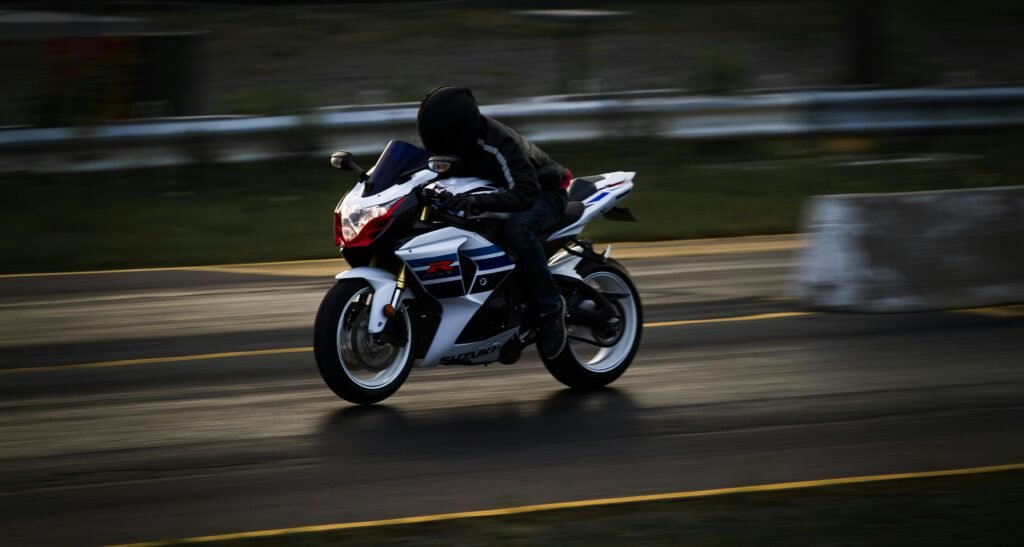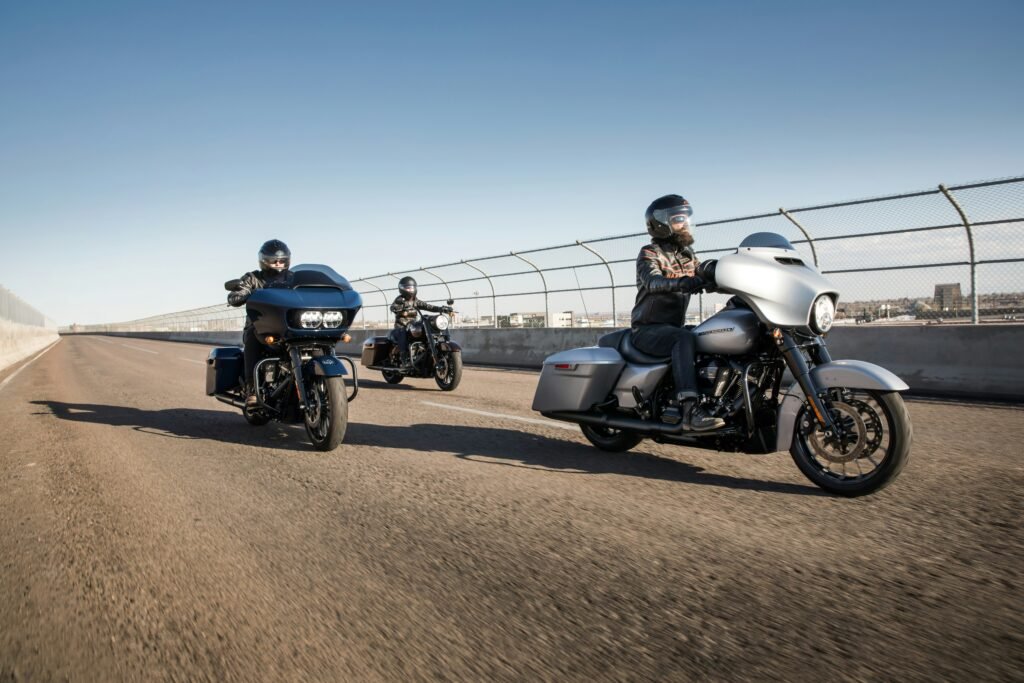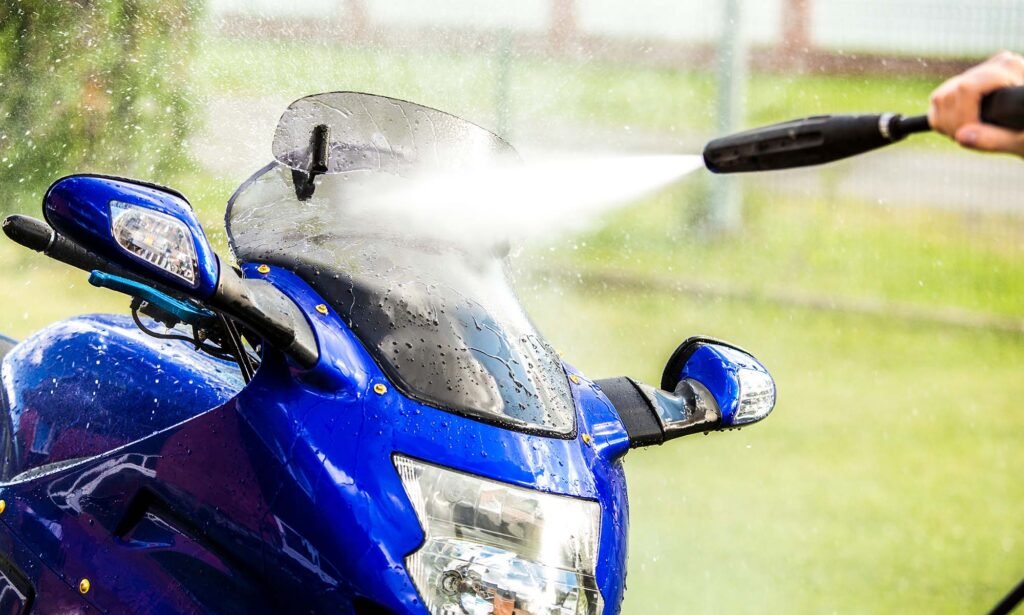While naked and streetfighter bikes often skip windshields, most motorcycles come with some form of wind deflector. However, the standard windshields can sometimes be too small, awkwardly shaped, or too short for taller riders. In line with the market economy saying, “if there was no demand, there would be no supply,” a robust aftermarket exists to provide you with the best windshield options.
The downside is that the sheer variety of windshields can be overwhelming when trying to find the perfect one for your bike that meets all your needs. Some riders seek touring windshields for long-distance comfort, keeping the wind at bay during cross-country trips. Others prefer a low-profile sport deflector to tuck behind for those extra speed gains on a track day straightaway.
To help you navigate the myriad options and find the right windshield for your motorcycle, whether you want to replace your current one or add a new one, I created this guide for you. Let’s start.
The Main Types Of Motorcycle Windshields

At the height level, windshields fall into one of five categories:
Touring: Windshields are typically the tallest type, commonly seen on adventure (ADV) bikes and long-distance cruisers. They are specifically designed to offer maximum wind deflection, directing air over the rider’s helmet and around their body. This design aims to minimize rider fatigue caused by wind, rain, and road debris, enhancing safety and comfort for long-distance travel.
Best For: Long-distance riders who spend hours on the highway.
Standard: Shorter windshields, often with more curvature, are designed to be more aerodynamic. They deflect air upwards and over the rider, or at least towards the helmet and around the sides of the body. These types of windshields are commonly found on dual-sport bikes like the 2023 Kawasaki KLR 650 or the 2022 Honda CRF300L Rally. They can also be seen on some sport-touring motorcycles.
Best For: General use, commuting, and long-distance touring.

Short: Windshields on sportbikes and supersports are designed more as wind-shapers than traditional windshields. These short, curved windshields are angled back to maximize aerodynamics when you tuck down under the airflow. If you were to ride upright, you’d still feel the wind hitting your chest and above.
Cruiser: Cruiser windshields strike a balance between protection and aesthetics, designed to match the style of cruiser motorcycles.
Best For: Riders who own cruiser motorcycles and want a good mix of protection and style for city rides and short to medium trips.
Adventure: Adventure windshields are versatile and designed to handle both on-road and off-road conditions, typically found on adventure and dual-sport bikes.
Best For: Adventure and dual-sport riders who need a windshield that performs well both on highways and off-road trails.
The Benefits of Motorcycle Windshields: Enhance Your Riding Experience

Riding a motorcycle brings freedom and excitement, but it also exposes you to various challenges on the road. A motorcycle windshield isn’t just an accessory; it’s a vital piece of equipment that can greatly improve your riding comfort and safety.
Protection from the Elements
One of the most crucial advantages of a motorcycle windshield is protection from debris, insects, rain, and other pollutants that can quickly obscure your visibility, especially at higher speeds. Anyone who’s been hit by a stray pebble or faced a sudden rain shower understands the seriousness of these situations. Beyond the pain and distraction, such incidents can even affect your control of the bike, underscoring the importance of staying safe on the road.
Reduced Wind Gusts and Noise
Another significant benefit is the reduction in wind gusts, not only improving your riding stability but also shielding you from the buffeting caused by larger vehicles. In adverse weather conditions, the windshield offers protection against wind and rain, making your ride more comfortable and less stressful.
Installing a windshield also cuts down on wind noise, which can be not only annoying but also detrimental to your hearing over long distances. By dampening wind noise and enhancing the sound of your engine, a windshield contributes to a more enjoyable riding experience.
Comfort and Fuel Efficiency
Riding with a windshield can alleviate strain on your back, neck, and shoulders, particularly beneficial on long journeys. The aerodynamic design of windshields helps motorcycles slice through the air more efficiently, potentially improving fuel efficiency over time. While the fuel savings may be modest, every bit counts and contributes to environmental conservation.
Protection for Gadgets and Accessories
Moreover, a windshield provides a shield for electronic gadgets mounted on your handlebars or dashboard. It safeguards devices like GPS systems or smartphones from water, debris, and impacts, offering a secure and convenient location for mounting such equipment. This not only enhances safety by keeping navigation systems at eye level but also ensures their longevity and functionality.
In essence, a motorcycle windshield isn’t just about aesthetics; it’s a practical investment that enhances your riding experience in multiple ways. Whether it’s improving visibility, reducing fatigue, or protecting your gear, choosing the right windshield can make every ride safer and more enjoyable.
Materials
When it comes to motorcycle windshields, two primary materials are commonly used: acrylic and polycarbonate. Each material offers distinct advantages and considerations for riders.
Acrylic:
Acrylic windshields are valued for their exceptional transparency, often superior to traditional glass. They are cost-effective, typically less expensive than polycarbonate, yet still provide sufficient strength and durability. Acrylic is also known for its scratch resistance; any scratches that do occur can be easily polished out. Moreover, acrylic does not fade or turn yellow when exposed to UV rays, maintaining its clarity over time.
Polycarbonate:
Windshields made from polycarbonate are renowned for their superior impact resistance compared to acrylic. They are highly resistant to chipping and cracking, ensuring reliable durability on the road. Polycarbonate windshields also offer good transparency, although not quite as clear as acrylic. However, unlike acrylic, polycarbonate cannot be polished if scratched, and it tends to yellow over time when exposed to UV rays. Despite these drawbacks, polycarbonate is favored by riders who frequently encounter harsh environmental conditions, such as pollutants, dirt, and dust.
In terms of cost, polycarbonate windshields are typically more expensive, often costing up to three times more than acrylic alternatives. This higher price point reflects the enhanced durability and impact resistance that polycarbonate provides.
Choosing the Right Material:
When selecting a motorcycle windshield, riders should consider their riding conditions and priorities. Acrylic is suitable for those seeking cost-effectiveness, excellent transparency, and ease of maintenance against scratches. On the other hand, polycarbonate offers superior durability and impact resistance, making it ideal for riders facing rugged environments and frequent exposure to debris.
By understanding the characteristics of acrylic and polycarbonate, riders can make an informed decision based on their specific needs, ensuring their windshield enhances both safety and riding comfort.
Understanding Motorcycle Buffeting: Dealing with Wind Turbulence
If you’ve ever ridden a motorcycle on the highway and felt an unexpected head shake, you’ve likely experienced what’s known as “buffeting.” It feels like an invisible force jostling your head from all directions—side to side, top to bottom, and front to back. This phenomenon isn’t just discomfort; it can lead to neck pain and headaches within minutes.
Buffeting occurs when wind turbulence hits your helmet repeatedly and vigorously. Unlike simple wind resistance, which is constant pressure from the wind, buffeting is caused by turbulent air swirling around the edges and inside the windshield or fairing. This erratic airflow creates vibrations and instability, affecting your ride quality.
Causes of Wind Buffeting
Wind buffeting typically occurs at higher speeds when the airflow around the motorcycle becomes turbulent. It can result from wind hitting the windshield at an angle, swirling around its edges, or flowing under the fairing and directly onto your chest and helmet. This inconsistent airflow disturbs the rider, leading to discomfort and reduced concentration.
How to Minimize Wind Buffeting
Correct Windshield Adjustment: Start by ensuring your windshield is properly positioned. Ideally, it should direct airflow smoothly over the top of your helmet. If your windshield has adjustable angles, experiment with different settings to find the optimal position.
For windshields without adjustable options, consider adding a wind deflector or opting for a longer windshield to redirect the airflow effectively.
DIY Solutions: If purchasing additional accessories isn’t feasible, you can try a simple DIY approach. Placing washers under the mounting screws creates a small gap under the windshield, allowing some airflow to reduce negative pressure without compromising the windshield’s stability. However, be cautious with this method to avoid loosening the windshield excessively.
Addressing Side Turbulence: Sometimes, buffeting originates from wind blowing under the motorcycle’s fairings. Installing additional fairings or wind deflectors can help redirect this airflow away from the rider, mitigating helmet flutter and enhancing overall stability.
By understanding the causes of buffeting and implementing these adjustments, riders can significantly improve their comfort and safety, especially during high-speed rides where wind turbulence is most pronounced.
Tips for Motorcycle Windscreen Care: Cleaning, Maintenance, and Polishing
Taking care of your motorcycle windscreen is crucial for maintaining visibility and extending its lifespan. Here are important tips for cleaning, maintenance, and polishing to keep your windscreen in top condition:

Cleaning:
Many riders worry about scratching their windscreen, especially during cleaning. Most scratches occur when attempting to wipe away dry dirt or dust particles, which act like sandpaper on the surface. Here’s how to clean it properly:
Preparation: Rinse the windscreen with warm water to remove loose particles, especially sand.
Microfiber Cloth: Use a microfiber cloth and specific screen cleaner to gently wipe away remaining dirt. Microfiber cloths trap particles, preventing them from scratching the windscreen.


1 thought on “The Ultimate Guide to Motorcycle Windshields”